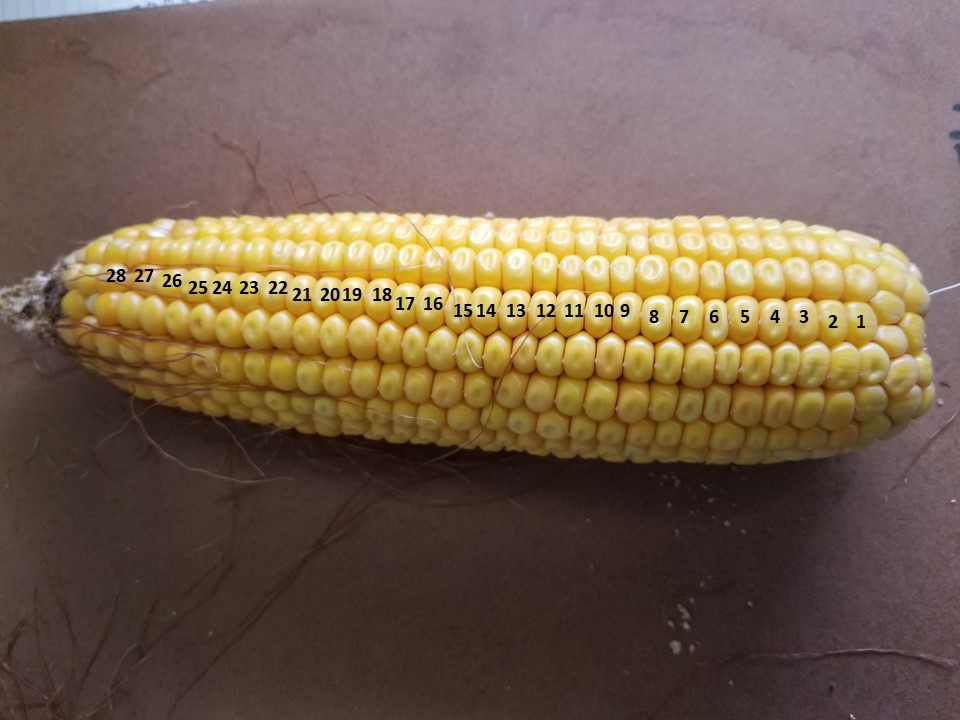Estimating Yield in Corn: Revised Method Based on Yield Components
go.ncsu.edu/readext?538459
en Español / em Português
El inglés es el idioma de control de esta página. En la medida en que haya algún conflicto entre la traducción al inglés y la traducción, el inglés prevalece.
Al hacer clic en el enlace de traducción se activa un servicio de traducción gratuito para convertir la página al español. Al igual que con cualquier traducción por Internet, la conversión no es sensible al contexto y puede que no traduzca el texto en su significado original. NC State Extension no garantiza la exactitud del texto traducido. Por favor, tenga en cuenta que algunas aplicaciones y/o servicios pueden no funcionar como se espera cuando se traducen.
Português
Inglês é o idioma de controle desta página. Na medida que haja algum conflito entre o texto original em Inglês e a tradução, o Inglês prevalece.
Ao clicar no link de tradução, um serviço gratuito de tradução será ativado para converter a página para o Português. Como em qualquer tradução pela internet, a conversão não é sensivel ao contexto e pode não ocorrer a tradução para o significado orginal. O serviço de Extensão da Carolina do Norte (NC State Extension) não garante a exatidão do texto traduzido. Por favor, observe que algumas funções ou serviços podem não funcionar como esperado após a tradução.
English
English is the controlling language of this page. To the extent there is any conflict between the English text and the translation, English controls.
Clicking on the translation link activates a free translation service to convert the page to Spanish. As with any Internet translation, the conversion is not context-sensitive and may not translate the text to its original meaning. NC State Extension does not guarantee the accuracy of the translated text. Please note that some applications and/or services may not function as expected when translated.
Collapse ▲Determining Yield Potential By Assessing Ears at or Near Dent Stage
The following procedures can be used to assess potential yield in corn. This assessment is best done at or near dent stage so that you can identify the kernels at the tip of the cob that will fill and reach maturity.
Step 1: Determine the number of plants in 1/1000th of an acre
Mark off a section of row representing 1/1000th of an acre. Table 1 shows the row length required to do this at different row spacing. Count the number of plants with productive ears in this area.
Step 2: Determine the number of kernels on each ear.
Select ears from five consecutive plants at five different locations in the field. For each ear, count the number of rows around the ear (Figure 1). Select one or two rows of kernels and count the number of kernels from the base to the tip of the ear. Do not count the first kernels at the base of the ear or very small kernels at the ear tip. Multiply the number of rows on the ear by the kernels per row to determine kernel number per ear. Average the kernel number per ear across all twenty-five ears selected from the field.
Step 3: Determine corn yield potential
Use the following equation to determine yield in bushels per acre:
(Plants per 1/1000th of an acre X average number of kernels per ear) / 90
The denominator (90) represents the average number of dry kernels in a bushel of corn and takes into account the fact that you have measured 1/1000th of an acre. If the kernels are bigger than normal then you could consider dividing by 85 or if the kernels are smaller than normal you could divide by 105.
In the ear examples above the equation (based on a plant population of 33,000 plants per acre) is:
(33 X 20 X 28) / 90 = 205.3 BUSHELS PER ACRE!!
Table 1. Row length needed to measure 1/1000th of an acre for determining plant populations at different row spacing.
| Row Spacing (Inches) | Length for Determining 1/1000th of an acre (fee) |
|---|---|
| 20 | 26.1 |
| 24 | 21.8 |
| 28 | 18.7 |
| 30 | 17.4 |
| 36 | 14.5 |
| 38 | 13.8 |
| 40 | 13.1 |




